j/k I already knew that.Yeah not exactly subtle!!
Aussie version is the same as Euro version....
But still S&B…do I not also speak English like wooferocau? Do I not have
(calling in HIMARS strike to Swaro HQ

Follow along with the video below to see how to install our site as a web app on your home screen.
Note: This feature may not be available in some browsers.
j/k I already knew that.Yeah not exactly subtle!!
Aussie version is the same as Euro version....
Its the best way to measure FOV without elaborate equipment and be able to compare to other scopes; however, there is some tolerance with diopter setting for different eyes but seems like no more than .1-.2 difference.That is a neat way of checking FOV, never thought about it.
I knew it was big, but having the same FOV at 25x that the US version has at just above 20x, thats… a lot.Just did the same with my EU 6-36x56 also with the P5FL, and got the following results:
• 10x: 22.2 mil
• 20x: 11.2 mil
• 25x: 9.0mil
Take the numbers for what it is, I have never done this before and readings are approximate, but no doubt there is a difference. Maybe someone can do the maths to verify the numbers.
The observed FOV numbers in mils posted above for the US and non-US versions of the S&B 6-36 check out pretty close to S&B's stated FOV specs, which are listed at 6x and 36x.
S&B's FOV specs at 36X come out to 21.66 degrees AFOV for the US model and 25.78 degrees for the non-US models.
The actual measured FOV in mils measured above by a few members comes out to right about 22 degrees AFOV at 25x (7.7 mil observed) for people who have looked through the US model, and right about 25.8 degrees at 25x (9 mil observed) for the non-US models. So yes, the simple "mil method" for checking FOV seems to be working out quite close to S&B's stated FOV specs. Measuring at 36x with the mag ring against the stop would be a better comparison to S&B's specs at 36x, but it sure tracks very closely at 25x.
(FYI, the observed ZCO 527 FOV as checked by glassaholic of 7.7 mils at 25x works out to be right around 22 degrees, narrower than ZCO's specs on their website, and suggests the ZCO is probably being limited via field stop or similar to right at or under 22 degrees AFOV, possibly to comply with the Swarovski patent. I wonder if ZCO would confirm this if emailed, and possibly correct the FOV specs on their website for US market scopes if this is the case. According the ZCO's website, the 527 should have an apparent FOV of 23.2 degrees at 27x, which would be right about 7.5 mils. If it's being limited to 22 degrees AFOV, that would be about 7.1 mils FOV at 27x. If anyone has a ZCO 527 I'd like to know the observed FOV in mils at 27x, and getting that measurement from both US and Aus/EU owners would be even better to see if there's a difference between markets...)
FYI, the NF ATACR 7-35 offers 22.99° AFOV while the Schmidt USA 6-36 offers 21.66° AFOV based on specs from mfr, this means the ATACR should have slightly more FOV than the USA version of the Schmidt at higher mags. If the ATACR has been "good to you" I am not sure that is enough to "switch", but that is a decision you have to make, I would say allow turrets and reticle to make more of the decision for you; granted, the Schmidt will have better glass than the ATACR so if it's pure optical performance that is where the Schmidt will have the definitive edge.After reading most of this thread, and with current sale price that Eurooptic, do you guys still consider this they buy. From what I’m reading, there is neutered FOV on the low end, but use for long and extended ranges the scope should be fine. Currently run a NF 7-35 which has been good to me, but also have no issues with S&B.
Thank you for the excellent response. You summed everything up, there was a marked improvement in glass quality on previous 5x25 pmii I have owned, and thought theFYI, the NF ATACR 7-35 offers 22.99° AFOV while the Schmidt USA 6-36 offers 21.66° AFOV based on specs from mfr, this means the ATACR should have slightly more FOV than the USA version of the Schmidt at higher mags. If the ATACR has been "good to you" I am not sure that is enough to "switch", but that is a decision you have to make, I would say allow turrets and reticle to make more of the decision for you; granted, the Schmidt will have better glass than the ATACR so if it's pure optical performance that is where the Schmidt will have the definitive edge.
If it's not too much to ask, can you also do 15x and 30x? I'm putting together a spreadsheet of alpha scopes and having this would be beneficial.That is a neat way of checking FOV, never thought about it.
Just did the same with my EU 6-36x56 also with the P5FL, and got the following results:
• 10x: 22.2 mil
• 20x: 11.2 mil
• 25x: 9.0mil
Take the numbers for what it is, I have never done this before and readings are approximate, but no doubt there is a difference. Maybe someone can do the maths to verify the numbers.
I'd like to know as wellCare to share the method used to convert to degrees?
Here’s my patented method:I'd like to know as well
If you have an angle in milliradians, divide by 1000 to get radians, then multiply by 180 and divide by Pi (~3.14) to get the angle in degrees.Here’s my patented method:
- Think about it
- Think about it in a dark room
- Think about it in a dark room with a beer
- Or three
- Scribble some stuff down, cosine, sine etc
- Discover all I did is draw some big titties
- Sigh the big le sigh
- Ask @koshkin
Here's how I've been converting manufacturer provided FOV width specs at a given distance and magnification into apparent FOV in degrees:
AFOV in degrees = magnification * arctan(FOV at target / distance to target)
Note, the FOV at target and distance to target from the manufacturer specs need to be in the same units, so meters and meters, feet and feet, or yards and yards.
So for the S&B 6-36 euro model, from the S&B specs at 36x you get:
36 * arctan(1.25m / 100m) = 25.78 degrees AFOV
And as a sanity check for my math, here's the math for the March 4.5-28 which March specifically says has a 25 degree eyepiece. March says the fov at 28x at 100m is 1.56m, so for the AFOV we get 28 * arctan(1.56/100) = 25.02 degrees, which matches what March says.
To convert from the easy field test of observed FOV through the scope reticle in mils to apparent FOV in degrees:
2 * magnification * arctan(FOV in mils / 1000)
So for the S&B euro model that was reported by a member above above to have a through the scope FOV of 9 mils on the reticle at 25x you get
2 * 25 * arctan(9 / 1000) = 25.78 degrees observed AFOV at 25x, which matches the S&B FOV specs at 36x.
If I'm incorrect, feel free to correct.
View attachment 8244023
Just for fun, here's the AFOV of various popular scopes at their max magnification in order of widest to narrowest based on published manufacturer specs.
- NX8 4-32: 27.5 degrees
- S&B 6-36 non-USA spec: 25.78
- US optics FDN 5-25: 25.06
- March 4.5-28 wide angle: 25.02
- S&B 3-20: 24.06
- Razor G3 6-36: 24.06
- XTR 3/Pro 5.5-30: 24.06
- Kahles K525 DLR: 23.39
- XTR 3 3.3-18: 23.37
- ZCO 5-27: 23.2 (advertised, based off under reports US model may be narrower, possibly <22 degrees)
- Tangent/Premier/Minox 5-25: 22.92
- ATACR 5-25: 22.92
- Zeiss S3 4-25: 22.92
- Zeiss S3 6-36: 22.69
- Razor G2 4.5-27: 22.68
- Tract 4-25: 22.44
- Leica PRS 5-30: 22.34
- NF ATACR 7-35: 22.05
- S&B 6-36 USA spec: 21.66
- Tangent 7-35: 21.66
- S&B 5-25: 21.48
- Cronus BTR 4.5-29: 21.21
- Tract 4.5-30: 21.2
- Bushnell XRS3 6-36: 20.63
- Bushnell LRHS2 4.5-18: 20.62
- Bushnell DMR3 3.5-21: 20.45
- Leupold MK5HD 5-25: 20.05
First formula is correct.Here's how I've been converting manufacturer provided FOV width specs at a given distance and magnification into apparent FOV in degrees:
AFOV in degrees = magnification * arctan(FOV at target / distance to target)
Note, the FOV at target and distance to target from the manufacturer specs need to be in the same units, so meters and meters, feet and feet, or yards and yards.
So for the S&B 6-36 euro model, from the S&B specs at 36x you get:
36 * arctan(1.25m / 100m) = 25.78 degrees AFOV
And as a sanity check for my math, here's the math for the March 4.5-28 which March specifically says has a 25 degree eyepiece. March says the fov at 28x at 100m is 1.56m, so for the AFOV we get 28 * arctan(1.56/100) = 25.02 degrees, which matches what March says.
To convert from the easy field test of observed FOV through the scope reticle in mils to apparent FOV in degrees:
2 * magnification * arctan(FOV in mils / 1000)
So for the S&B euro model that was reported by a member above above to have a through the scope FOV of 9 mils on the reticle at 25x you get
2 * 25 * arctan(9 / 1000) = 25.78 degrees observed AFOV at 25x, which matches the S&B FOV specs at 36x.
If I'm incorrect, feel free to correct.
View attachment 8244023
Just for fun, here's the AFOV of various popular scopes at their max magnification in order of widest to narrowest based on published manufacturer specs.
- NX8 4-32: 27.5 degrees
- S&B 6-36 non-USA spec: 25.78
- US optics FDN 5-25: 25.06
- March 4.5-28 wide angle: 25.02
- S&B 3-20: 24.06
- Razor G3 6-36: 24.06
- XTR 3/Pro 5.5-30: 24.06
- Kahles K525 DLR: 23.39
- XTR 3 3.3-18: 23.37
- ZCO 5-27: 23.2 (advertised, based off user reports US model may be narrower, possibly <22 degrees)
- Tangent/Premier/Minox 5-25: 22.92
- ATACR 5-25: 22.92
- Zeiss S3 4-25: 22.92
- Zeiss S3 6-36: 22.69
- Razor G2 4.5-27: 22.68
- Tract 4-25: 22.44
- Leica PRS 5-30: 22.34
- NF ATACR 7-35: 22.05
- S&B 6-36 USA spec: 21.66
- Tangent 7-35: 21.66
- S&B 5-25: 21.48
- Cronus BTR 4.5-29: 21.21
- Tract 4.5-30: 21.2
- Bushnell XRS3 6-36: 20.63
- Bushnell LRHS2 4.5-18: 20.62
- Bushnell DMR3 3.5-21: 20.45
- Leupold MK5HD 5-25: 20.05
First formula is correct.
Second one is not. You do not take an arctan of an angle. Thankfully, for small angles, it is almost the same, so your numbers are pretty accurate despite the wrong formula.
ILya
The thing we ignore as shooters is the difference between arc length and chord length.
We use arc length - the curve subtended by a given angle. However, our target dimensions are almost universally linear - the chord length between two points on the circumference. However, the error when using large lengths and small angles is pretty negligible.
1 MRAD @ 100 yds is 3.6” - of ARC length. It’s actually “only” 3.59999985” of Chord length… so, you can see, HUGE difference.
My inelegant means of calculating that, should the urge arise, is bisecting the isosceles triangle formed by the angle, calculating the “opposite” side using Sine and the distance, and then doubling it.
You can always blame something for the miss. We both know it is never our fault...I thought something was a little off with the second formula, but as mentioned, the error appeared to be slight so I considered it good enough and didn't look into it anymore. I was really only looking for gross deviations between the manufacturers FOV specs and what end users are seeing, and that formula seemed to agree very closely with published manufacturer specs.
In the formula I posted, I wasn't thinking of taking the arctan of an angle, but rather taking the arctan of the observed FOV at target / distance to target (being the 2 legs of the triangle)-- in this case arbitrarily considering the FOV at 100m for simplification. So say you observe a 9 mil FOV on the reticle; 9 mils is 90cm or 0.9m at 100m, so taking the arctan of the observed reticle fov in mils divided by 1000 takes care of the unit conversion for you and also divided the FOV at target by the 100m distance to target. Arctan(FOV in mils / 1000) looked cleaner than arctan((FOV in mils / 10 to convert mils to meters at the arbitrarily set 100m) / 100m)
I'll have to sit back down and rethink that one when I get a moment, might as well do things correctly.
Correct, arc length and chord length are being treated a little fast and loose here, but given the angles and lengths involved the difference in this situation is pretty negligible.
Can I still blame that slight difference between arc length and chord length for missing the target because I didn't bend the correct curvature into the target backer board to establish the exact arc length required given the distance to the target, and because of that my turrets and reticle didn't track 100% correctly?
You can always blame something for the miss. We both know it is never our fault...
On the formula: you are overcomplicating it. If you measure it with the reticle, it is already in angular units. No need to bring distance into it.
Measure in milliradians using the reticle.
Convert to radians by dividing by 1000.
Then multiply by 180 and divide by Pi to get degrees.
ILya
Wow 10k, we just shot out to 2400 yards 2 weekends ago, I was able to compare my buddies TT 7-35 vs NF 7-35. TT glass had slightly better contrast at that distance but seemed to have a tighter eye box. I just can’t justify the almost double the cost for a slight increase in glass.A new TT 7-35 is circa AUD $10K+ now.. ..... So in Aus TT pricing is real hard to swallow ....so to a degree we get screwed on that!!
How soon are you going to try this out? I’m also interested in the P5 reticle, would like to hear range report, as I’d like to maybe get another one pricing goes back upNumber two just arrived so I can try the P5FL for a change.
View attachment 8245240
If this works out better for me, then the GR^2ID will go to the PX
• 15x: 14.8 milsIf it's not too much to ask, can you also do 15x and 30x? I'm putting together a spreadsheet of alpha scopes and having this would be beneficial.
Haven't seen the TT 7-35 but.......... i own a TT 5-25 and i rate the S&B 6-36 higher..Wow 10k, we just shot out to 2400 yards 2 weekends ago, I was able to compare my buddies TT 7-35 vs NF 7-35. TT glass had slightly better contrast at that distance but seemed to have a tighter eye box. I just can’t justify the almost double the cost for a slight increase in glass.
In summary, there appears to be a patent that Swarovski filed that prohibits other manufacturers from including wide angle eyepieces (> 22°) in their scope designs. Swaro filed in Europe and USA, Leica fought the patent in Europe and won and the rule no longer applies there, but nobody has fought the patent in the US. Only German/Austrian manufactured scopes appear to be affected as plenty of scopes coming out of other areas of the world do not have this restriction. Schmidt, TT, ZCO, Zeiss et al all seem to be affected by this and do not have a scope (after the patent went into place) that offer AFOV greater than 21.66° (though there do seem to be some exceptions to this rule). Schmidt appears to be the only one to list two different FOV values between USA market scopes and everywhere else, that's what started this all...Please excuse my ignorance, why is there a difference in FOV between the EU and US version?

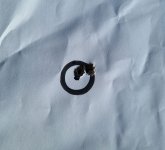
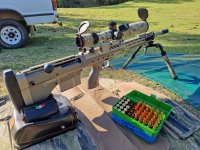
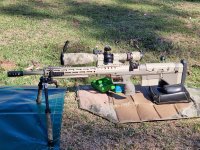
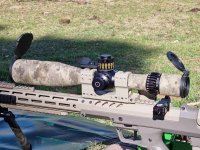
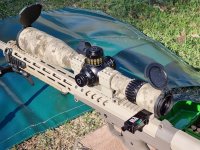
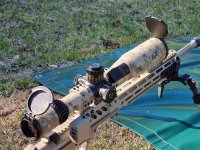
It fits. Still produced last I checked, I ordered one this year when I briefly had a 6-36. P/N 971-06841.Do they not make the shark fin throw lever anymore? Has anyone installed on, does it fit on a 6-36. It looks like it clamps on one of the ribs, any bad experiences with it?
Eurooptics had some, not sure if still in stock, they also listed some on eBay, $150/ I bought one for my 1-8, I haven’t run it T the range yet, seemed to clamp up fine, not sure if I will like it yet, wish it would fold down to one side when not in useDo they not make the shark fin throw lever anymore? Has anyone installed on, does it fit on a 6-36. It looks like it clamps on one of the ribs, any bad experiences with it?
I'm glad I'm not the only one that was impressed with that. Maintaining a nice image and consistent eyebox through the full range of magnification feels like it should be a no-brainer, but I've run so many scopes over the years that really struggle with that.the 6-36 has full resolution from start and keeps it.
Is this the euro spec model?I was quite surprised to see the difference between the 5-25x and the 6x36 on 6x magnification (and thereabouts), the 6-36 has full resolution from start and keeps it.
The new 6-36 is so much better overall, so my friend ended up "borrowing it" for his new Rim X super Rimfire in Spuhr chassis, very sweet setup but quite costly.
We did some 22LR Lapua ammunition evaluation today at 50 meters, to chose type and batch.
14.57 mm (edge to edge, not center to center) 10 shots, at 50 meters, and not shooting from a bench so allowing for some shooter error.
I am in Europe, yes. I would presume it's the EU model, but don't know how to see the difference.Is this the euro spec model?
Yeah the EU models have the best FOV on the market of any alpha scope. Big jealousI am in Europe, yes. I would presume it's the EU model, but don't know how to see the difference.
You can see it in my image above, with the 5-25 side to side.Yeah the EU models have the best FOV on the market of any alpha scope. Big jealous
If you have a chance, it’s be cool to zoom each scope to the same mrad mark.You can see it in my image above, with the 5-25 side to side.
